The Sarajevo City Hall, called Vijećnica, is one of the symbols of Sarajevo and a place that tourists cannot avoid. In this post, you will read a short history of this magnificent building.
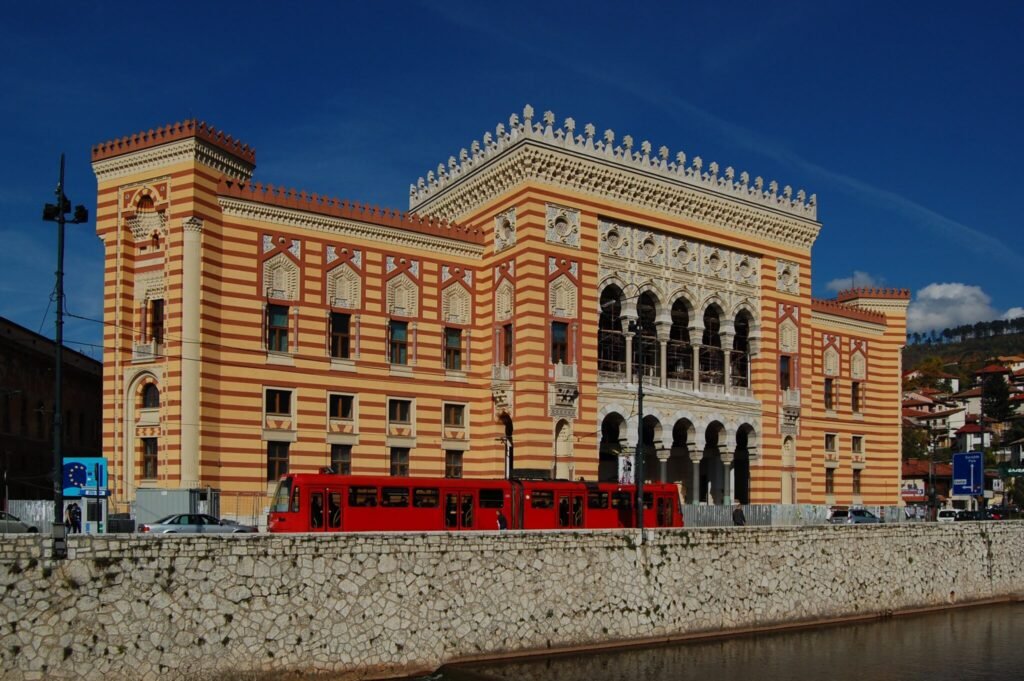
Sarajevo is a city where east and west meet, a city that represents a meeting of civilizations. The City Hall is one of the symbols of this meeting of civilizations.
Construction
After the Austro-Hungarian occupation of Bosnia and Herzegovina in 1878, the Sarajevo City Council was formed under the orders of the Austro-Hungarian government. Therefore it was necessary to build a representative building as the headquarters of the city administration. This need was expressed in 1880, but the construction of the City Hall did not begin until 1892.
The first project was entrusted to architect Karl Parzik who designed many buildings in Sarajevo and his most famous work in this city is the building of the National Museum of Bosnia and Herzegovina. However, the project made by Parzik was rejected by Minister Benjamin Kallay and the project was entrusted to architect Alexandar Wittek, who was working on it from 1892 to 1893. Since Alexandar Wittek designed City Hall in Pseudo-Moorish style, he went twice to Cairo to study buildings constructed in this style. The mosque of Hasan II in Cairo served as a model for this project.
As Witek allegedly became mentally ill and committed suicide precisely because of this project (insufficient lighting in the main hall of the building), the completion of his project was entrusted to Ćiril M. Iveković in 1894. With the small changes of Wittek’s solution, the project ended in 1894. The building was officially opened on April 20, 1896.
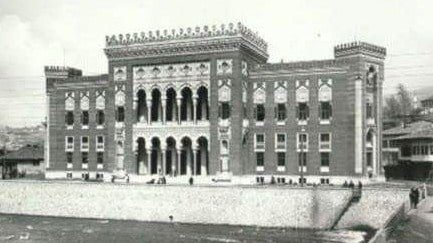
Franz Ferdinand in the Sarajevo City Hall
Just before World War I started crown prince of Austro-Hungarian, Franz Ferdinand, with his wife Sofia came to Sarajevo. The ceremonial reception was organized in the City Hall building on June 28, 1914, and a few minutes after a visit to the City Hall and the city government, Franz Ferdinand and Sofia were shot by Gavrilo Princip. This event was taken as the reason for the beginning of World War I.
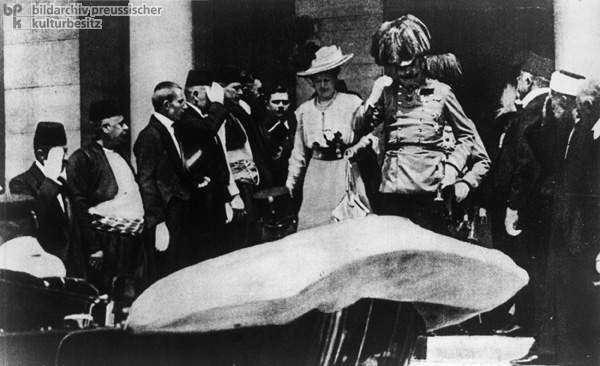
National and University Library
After World War II, Vijećnica became home to the National and University Library of Bosnia and Herzegovina. Originally, the City Hall was the building of the then city administration of Sarajevo. After World War II, until 1949, the Town Hall served as the building of the District Court of Sarajevo and the seat of the Assembly of Bosnia and Herzegovina. After that, the Town Hall became the City Library, that is, the National and University Library of Bosnia and Herzegovina. The National Library is located in the City Hall building in 1951.
War 1992 – 1995
During the war that lasted in Bosnia and Herzegovina from 1992 to 1995, Sarajevo was surrounded. Grenades were fired at Sarajevo from the surrounding hills and mountains. In one such attack, the Sarajevo City Hall was also hit. In just one night 25/26. August 1992 from aggressor grenades 80% of the total library fund was destroyed and this beautiful and valuable cultural monument was destroyed. About two million books, articles, and magazines have been irretrievably destroyed. The fire caused by direct artillery grenades also caused damage to the construction of the facility.
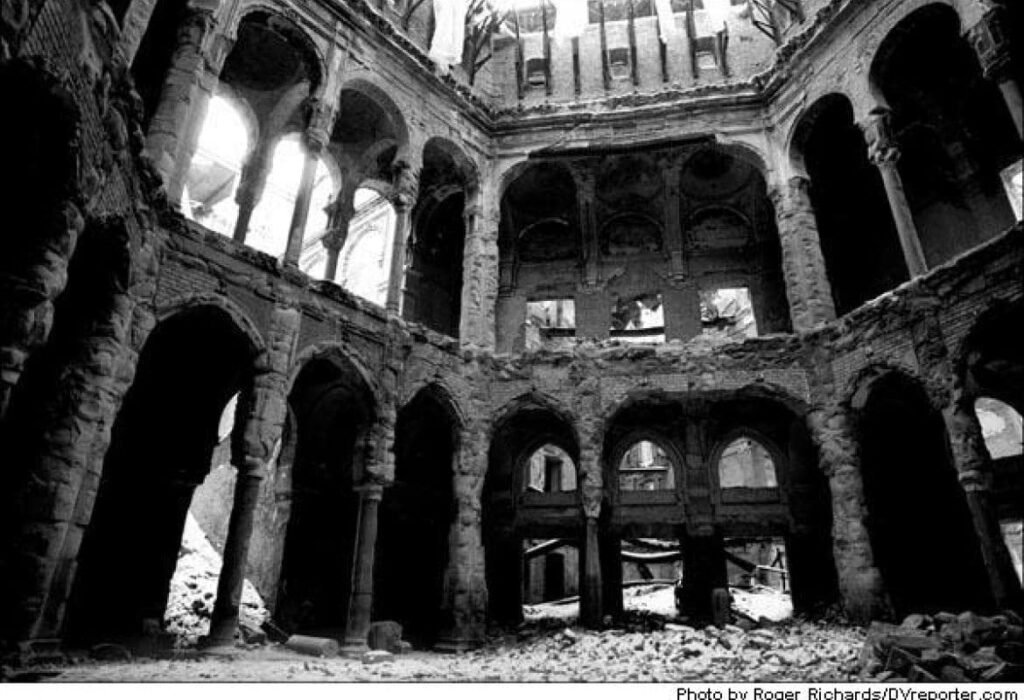

Reconstruction
The reconstruction and renovation of the City Hall building took a long time – from 1996 to 2014, when it was reopened.
The reconstruction of the City Hall took place in two phases. The first phase was from 1996 to 1997. and was financed by donations from the Austrian government of €750,000. Static stabilization and restoration of the roof structure were carried out. The iron structure above the dome was repaired and a new glass cover was installed. The second phase was from 2000 to 2004 and it was financed by donations from the European Commission of €2,250,000. After being renovated, the Town Hall was reopened on May 9, 2014.
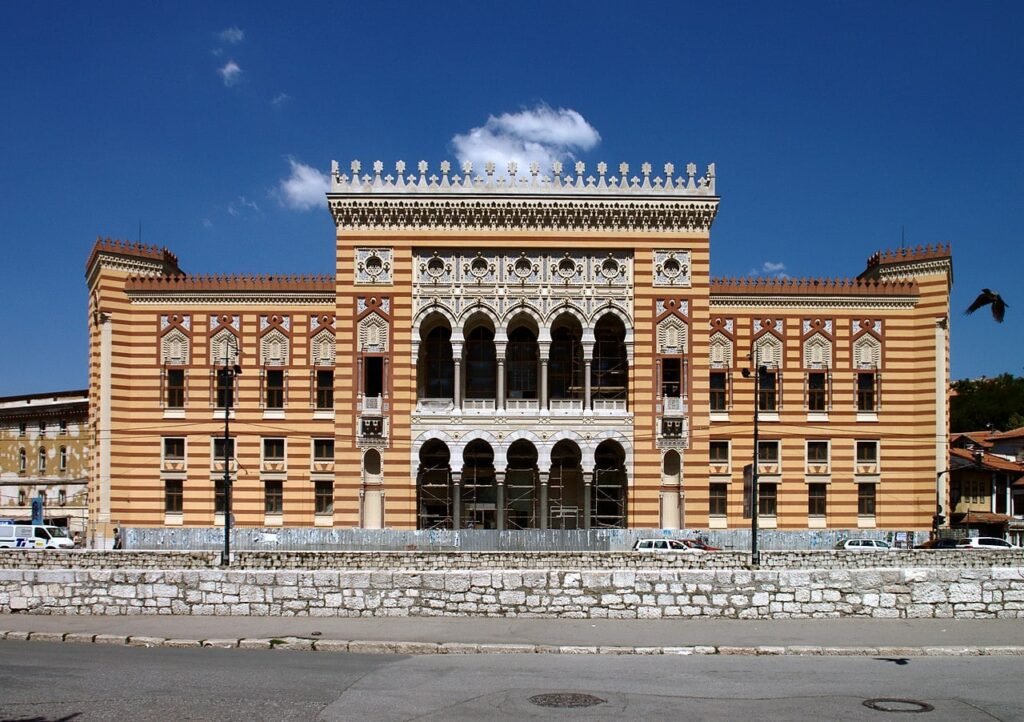
The Sarajevo City Hall today
The Institute for the Protection of the Cultural, Historical and Natural Heritage of the Canton of Sarajevo created conceptual program solutions for the functional use of the Sarajevo City Hall. They concluded that the Sarajevo City Hall could serve as the headquarters of the City Administration of Sarajevo and the National and University Library of Bosnia and Herzegovina and also could be used for cultural events of a public nature, as well as for other events.
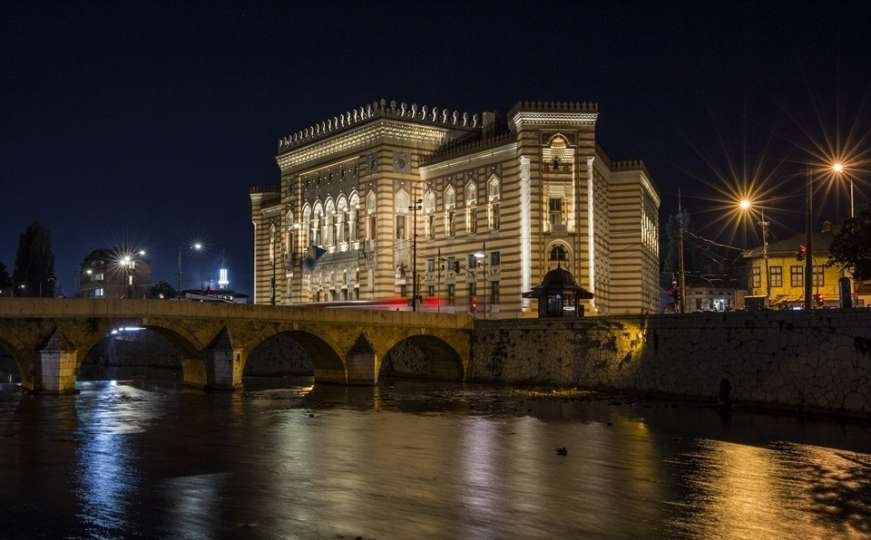
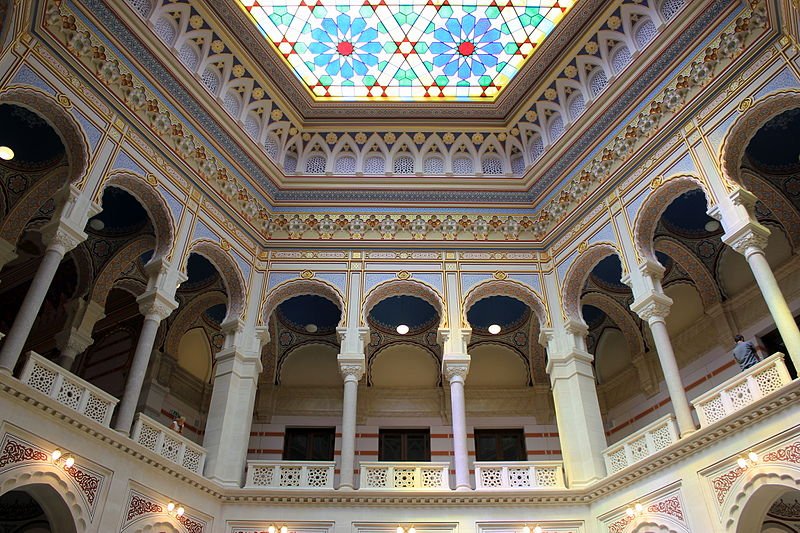
Today building of Sarajevo City Hall also hosts two museums. The first is a museum about the Siege of Sarajevo and the second is an international contemporary art collection, called Ars Aevi. The City Hall is one of the favorite places for tourists and thanks to its elegant main hall Vijećnica has become popular for wedding photos.
Visit our social media profiles as well:
